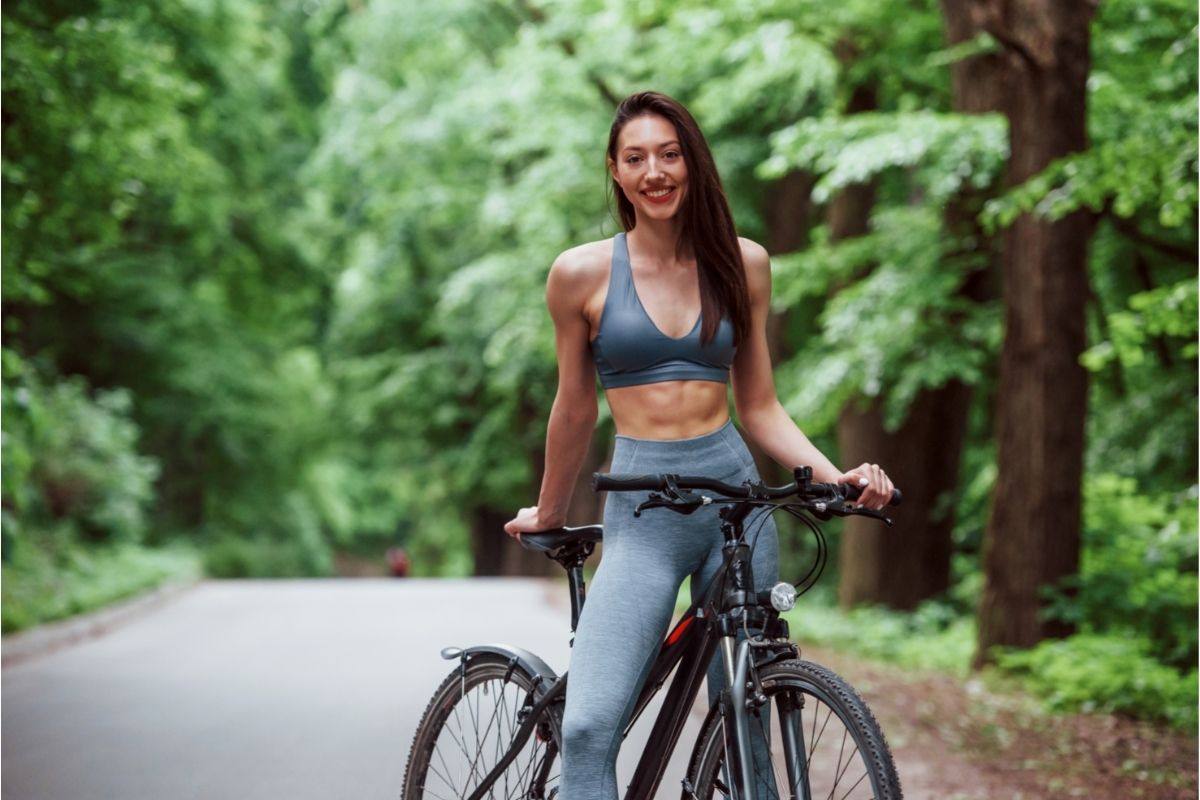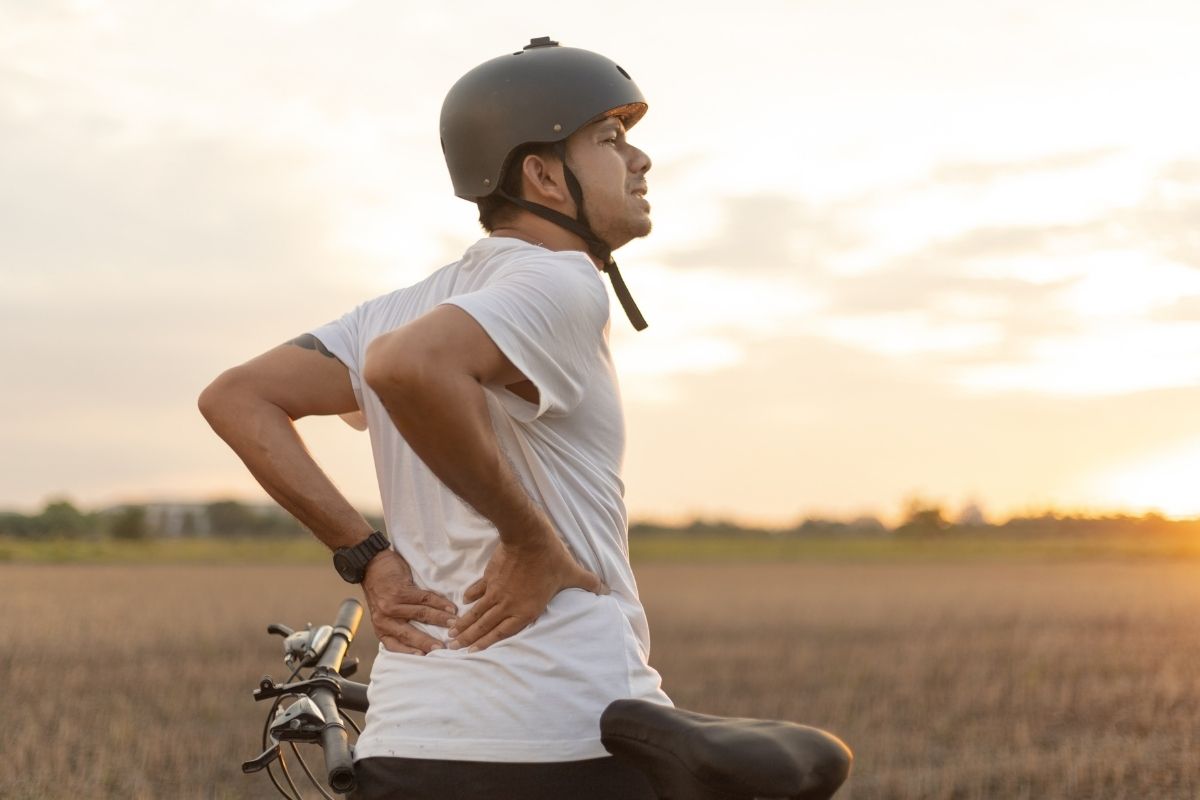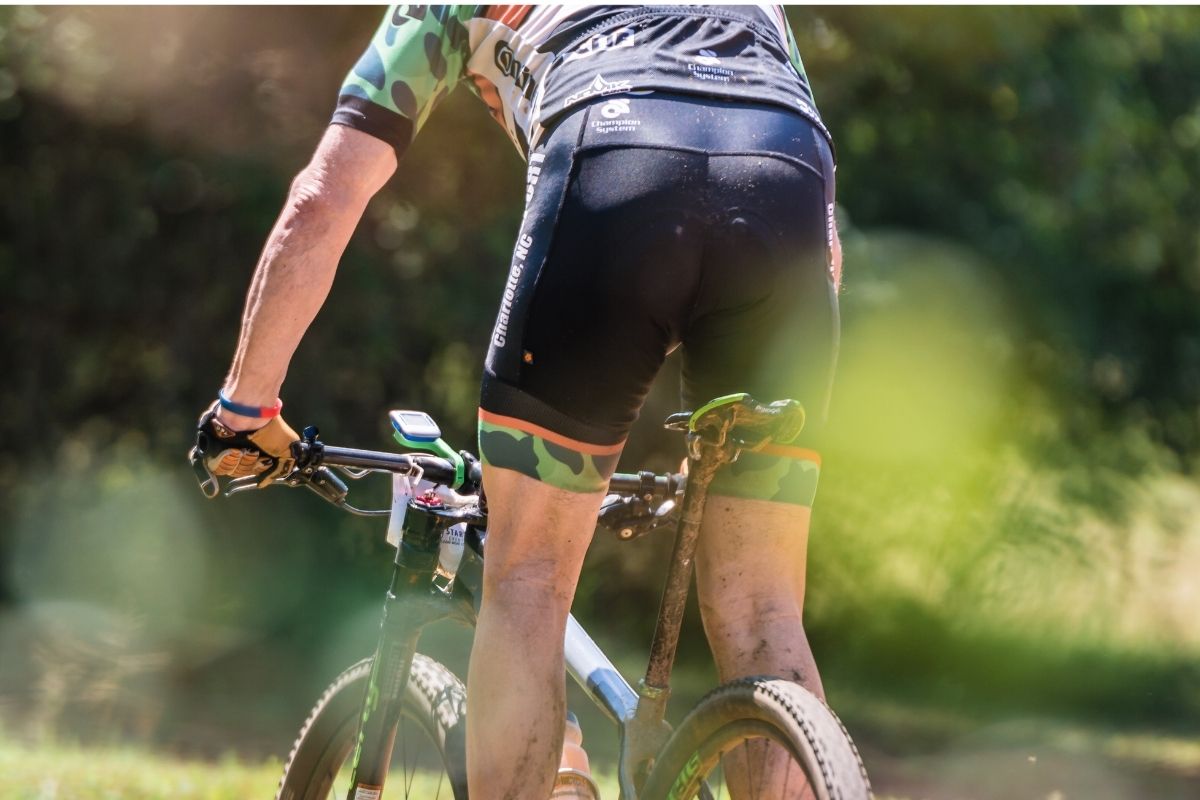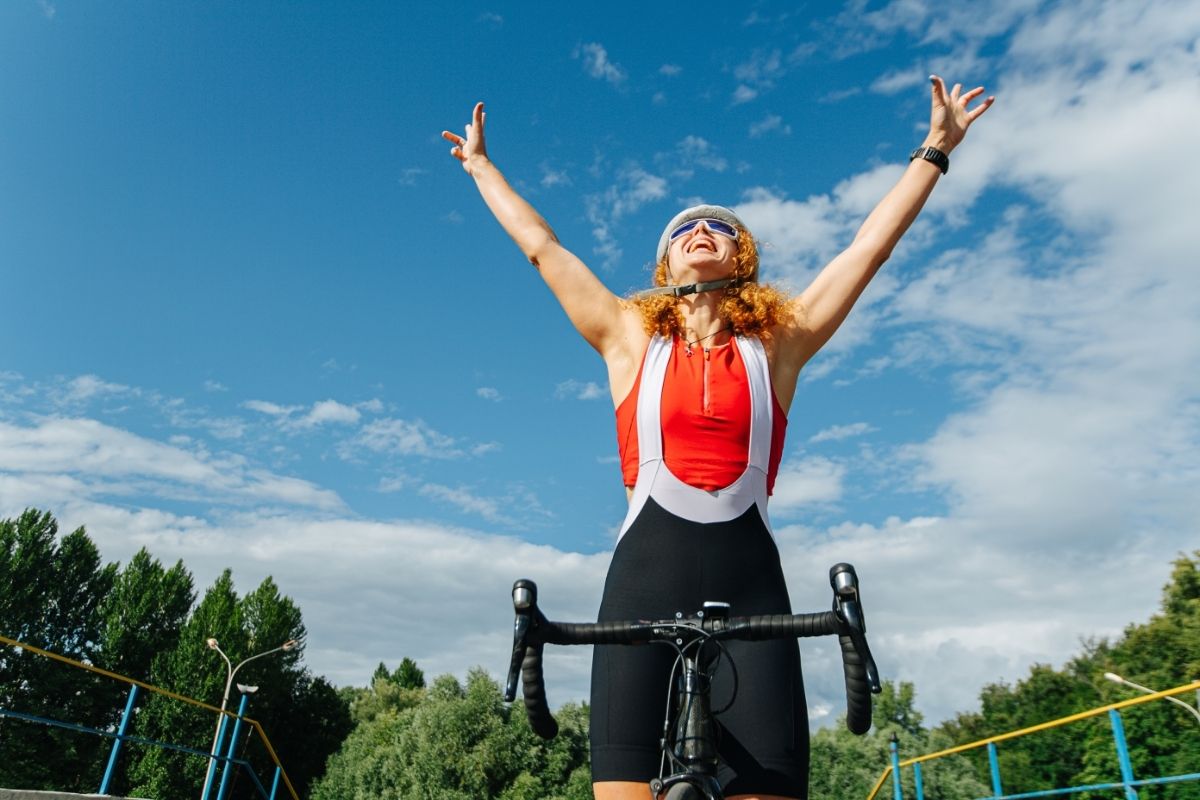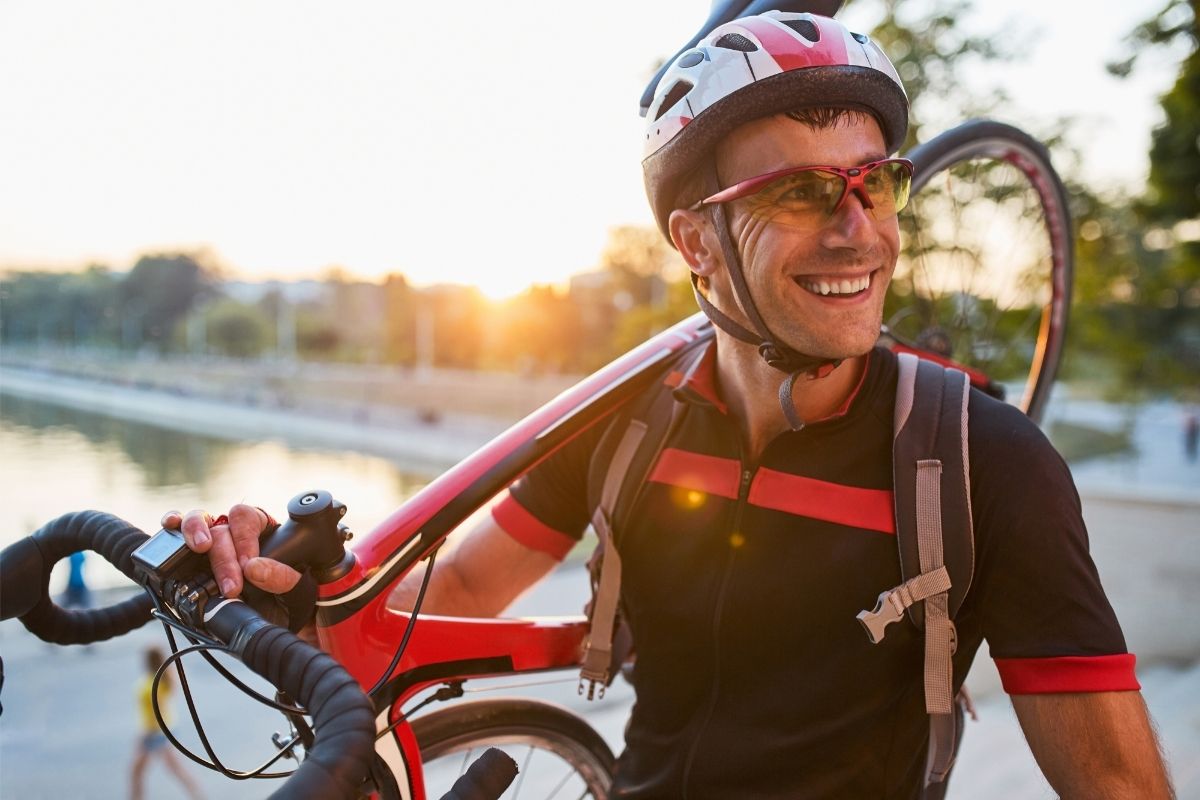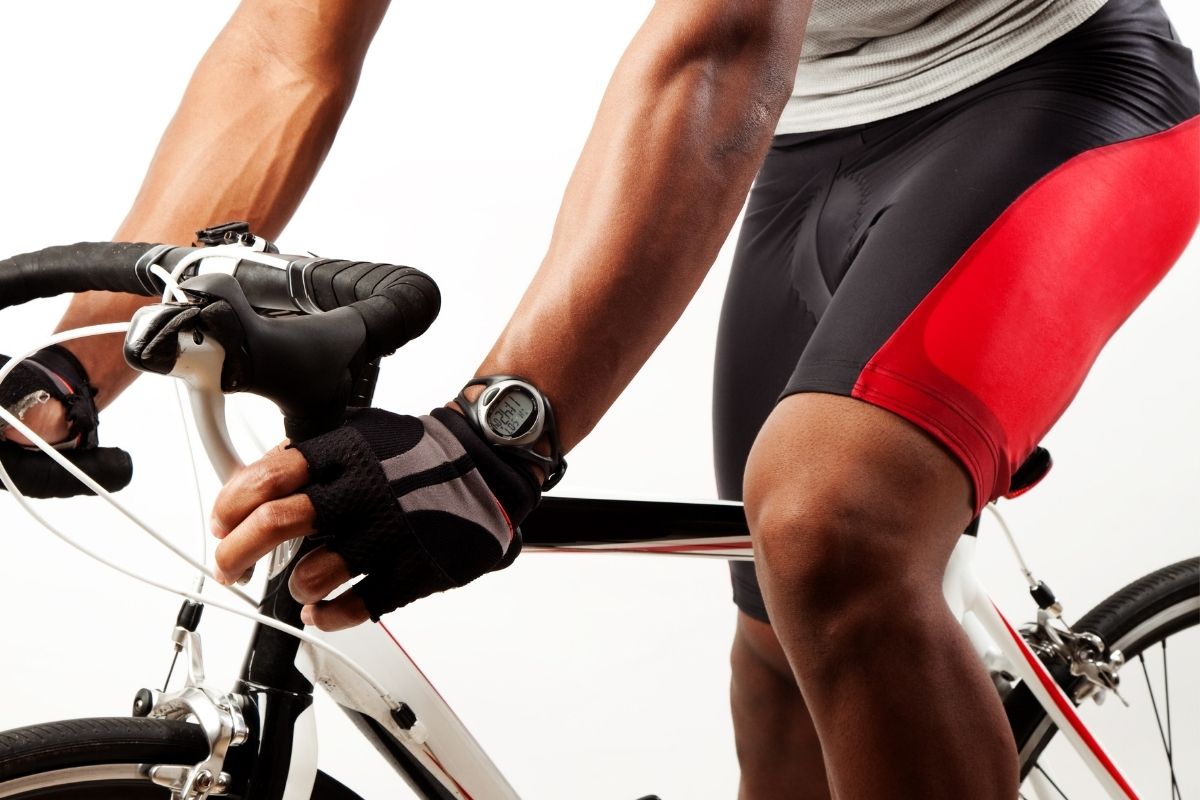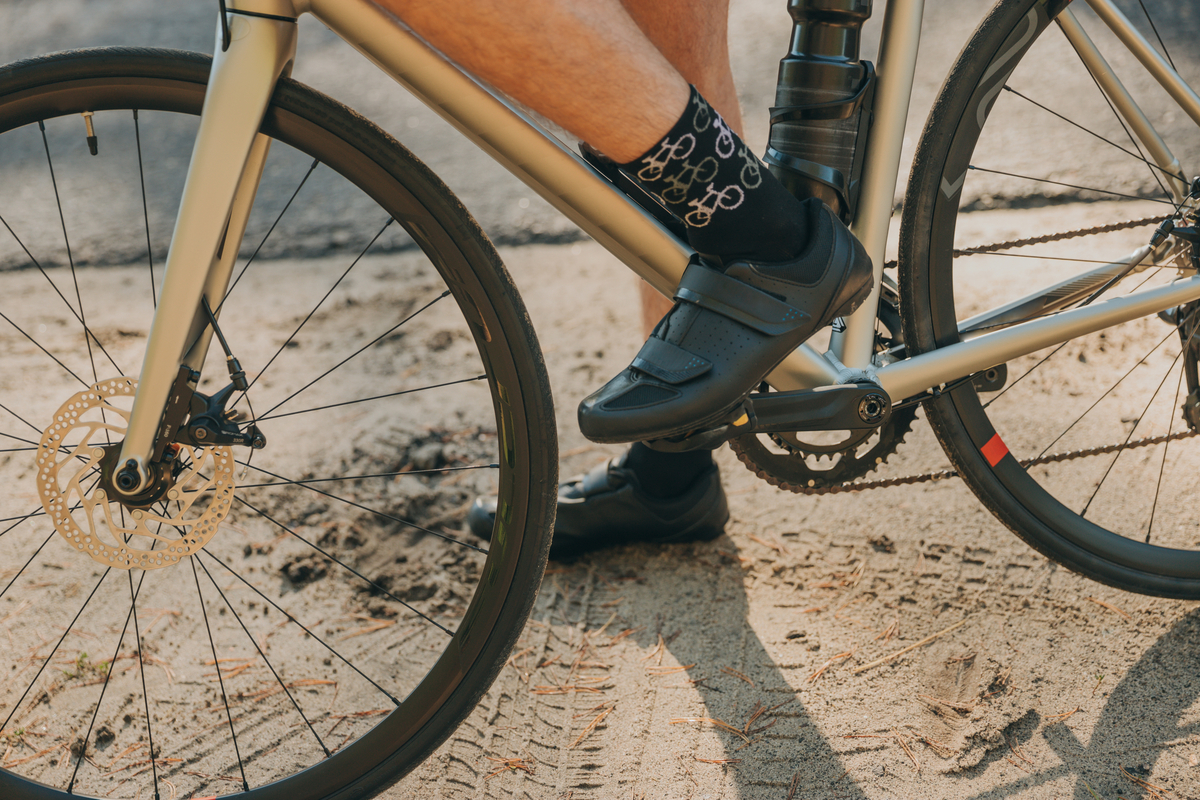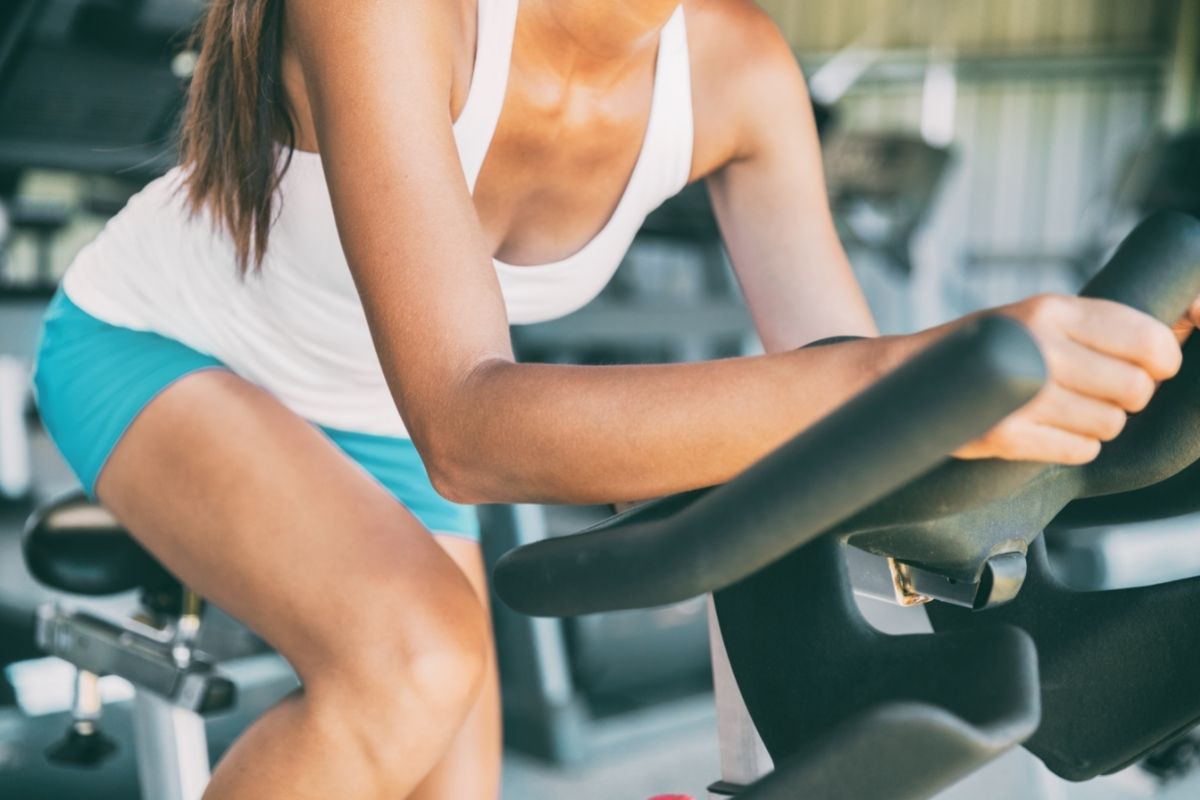Cycling is a great way of getting outside while also benefiting your body.
Here we look at the muscle groups that are targeted and used while cycling while also showing you how to effectively train these muscles to prevent injury.
Muscle Groups Targeted And Used While Cycling
While for some you may imagine riding a bike on a summer’s day, enjoying an ice cream, cycling is actually a form of exercise that works a number of different muscles.
The first groups of muscles that are worked are in your upper and lower legs, the muscles include quads, hamstrings, and glutes.
These muscles are responsible for most of the work when you are cycling as they are responsible for pushing the pedal to keep your wheels going as well as balancing on your saddle.
The next group of muscles is upper body muscles which include core muscles as well as the arms, shoulders, back, and chest muscles.
The core muscles are extremely important here as they are responsible for maintaining your balance while on the bike.
The arms hold you in position, clutching onto the handlebars, and the shoulder, back, and chest help to support the arms and your upper body to stay upright.
Most wouldn’t expect that cycling would be targeting so many muscle groups but that is what makes it such a popular style of exercise as different types of cycling have varying intensities associated with them.
Road racing is all about power and speed while cycling on mountain trails the focus is on staying balanced on the uneven terrain and being alert for any unexpected wildlife or people that may appear.
To help prevent injury it is important to train the muscles that are used during cycling. Training these muscles will in turn help you to become faster and stronger on the bike.
How To Train Muscles Used While Cycling
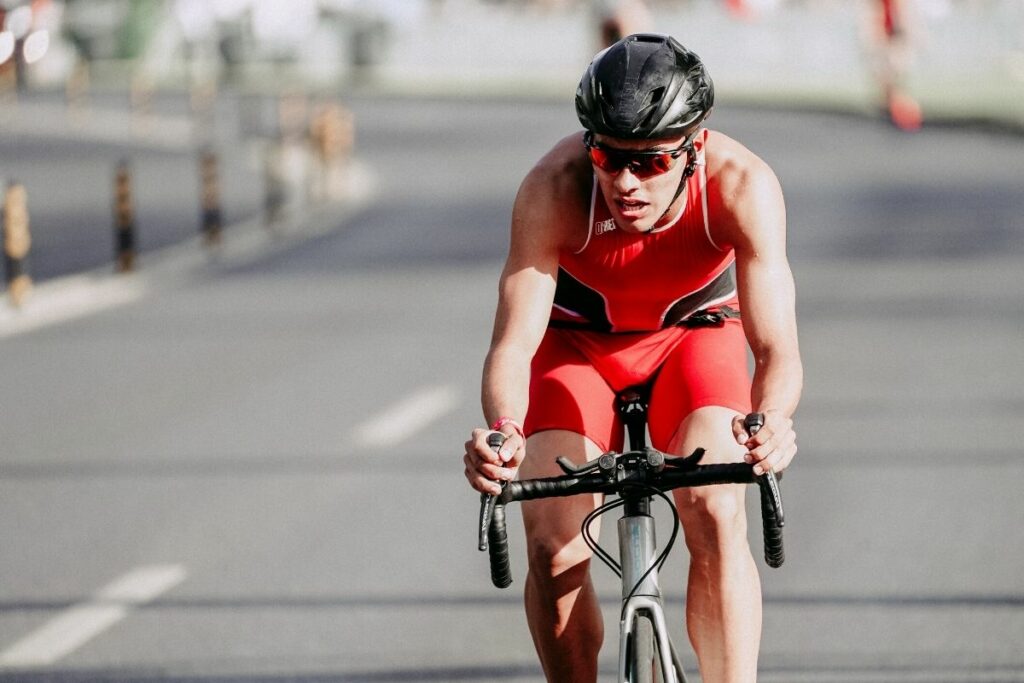
Here we look at the best ways to train your muscles to achieve new heights on the bike.
Upper And Lower Leg Muscles
The quads, hamstrings, and glutes are the sources of your power when you are on the bike and so when training these muscles it is important to focus on working on both endurance and strength.
By training your muscles to have better endurance you can help to prevent muscle fatigue and allow you to achieve high power for longer durations of time.
We recommend going on easier cycles for long periods to help support your muscles to develop better endurance. Strength training can easily be done in the gym and both squats and deadlifts are a great way of working these muscles collectively.
Core Muscles
Training your core muscles is needed as you will need this strength to support yourself on the bike as well as to maintain balance, but unfortunately, core muscles are not developed when cycling, they are solely targeted as a source of strength.
Without training your core muscles you will possibly struggle with balance and become fatigued quicker when cycling. To work on your core strength you can do a simple plank. Planks can be done at home and do not require any fancy gym equipment.
When starting with this exercise begin by holding the plank for 30 seconds and aim to repeat this 3 to 5 times.
As your core muscles develop, change the duration of time that you hold the plank position from 30 seconds to 45 seconds and so on until you reach multiple minutes.
Planking is a great way to develop core strength rapidly and with visible results in a matter of weeks, depending on your starting shape.
Upper Body Muscles
Some upper body muscles are used more than others so it is important to train all of your upper body muscles to avoid any muscle imbalances.
You can train your upper body by performing push-ups and pull-ups as well as other weighted exercises.
Beneficial weighted exercises include the bench press, barbell rows, bicep curls, and variations of weighted dumbbell fly exercises.
Free weights are a great way of performing single muscle targeting exercises but if you do not have access to gym equipment body weighted movements are also beneficial.
Final Thoughts
Cycling is a fantastic way of getting out into the great outdoors and a nice form of exercise that can be tailored to suit any individual’s needs.
Whether you want to enjoy a leisurely cycle or you are looking for a more adventurous trail there is something for everyone.
Supporting your muscles by engaging in separate training will allow you to prevent injury and also keep your body, physically and mentally, healthier.
Frequently Asked Questions
Is Cycling Good For Weight Loss?
Cycling is considered to be a fantastic cardio workout. Cycling hugely benefits your aerobic system as well as your cardiovascular health.
It helps to boost the health of your heart and lungs as well as improve blood flow throughout the body, building strength in the muscles, and also is associated with lowering stress levels.
Alongside all of these internal benefits, you will also notice physical benefits as muscles begin to become more defined and fat is burned helping you to lose weight.
Weight loss takes time if you are solely cycling, but alongside a healthy and balanced diet, you will lose weight gradually.
Will Cycling Give Me Big Legs?
This depends on the type of cycling that you are doing as well as the intensity. Often it is your aerobic muscles that develop more so than your leg muscles.
Your aerobic systems work hard to get oxygen to the muscles you are working which means that these muscles do not need to develop to a huge extent.
Your leg muscles will mostly look toned but bear in mind that for road racing you will need smaller legs so that they can move fast to get you up hills as fast as possible.
If you are hoping to develop large leg muscles, weightlifting in the gym would be a better way of getting the results you want.
Is Cycling Better Than Running?
Running uses more muscles as you do not have the support of anything while you are engaging in this form of exercise. All you have is your body to get you from A to B at fast speeds.
Therefore it burns more calories and is often considered to be better than cycling for weight loss purposes. The downside of running is that it is likely that you will injure yourself and that is where cycling is better as it is gentler on the body.
You should speak with a healthcare professional regarding what form of exercise would be best suited to you and also speak about any weight loss goals you may have to ensure you lose weight safely and can sustain the new weight that you hope to reach.
What Are Common Cycling Injuries?
The injuries that your body may be prone to will vary based on your body’s strength and abilities.
Most people suffer from knee pains, this is often due to poor bike fits or due to an accident as often cyclists that fall from their bike will land on their knees.
Overtraining can cause muscle fatigue which can cause muscles to tear easily. It is important to train your muscles away from the bicycle to ensure that your muscles develop at a safe rate and in a balanced way.
- Melbourne Bike Share App: Short Review - February 7, 2022
- Cycling Rules In Melbourne - February 4, 2022
- Bike Sharing In Melbourne: What Are The Alternatives - February 4, 2022

